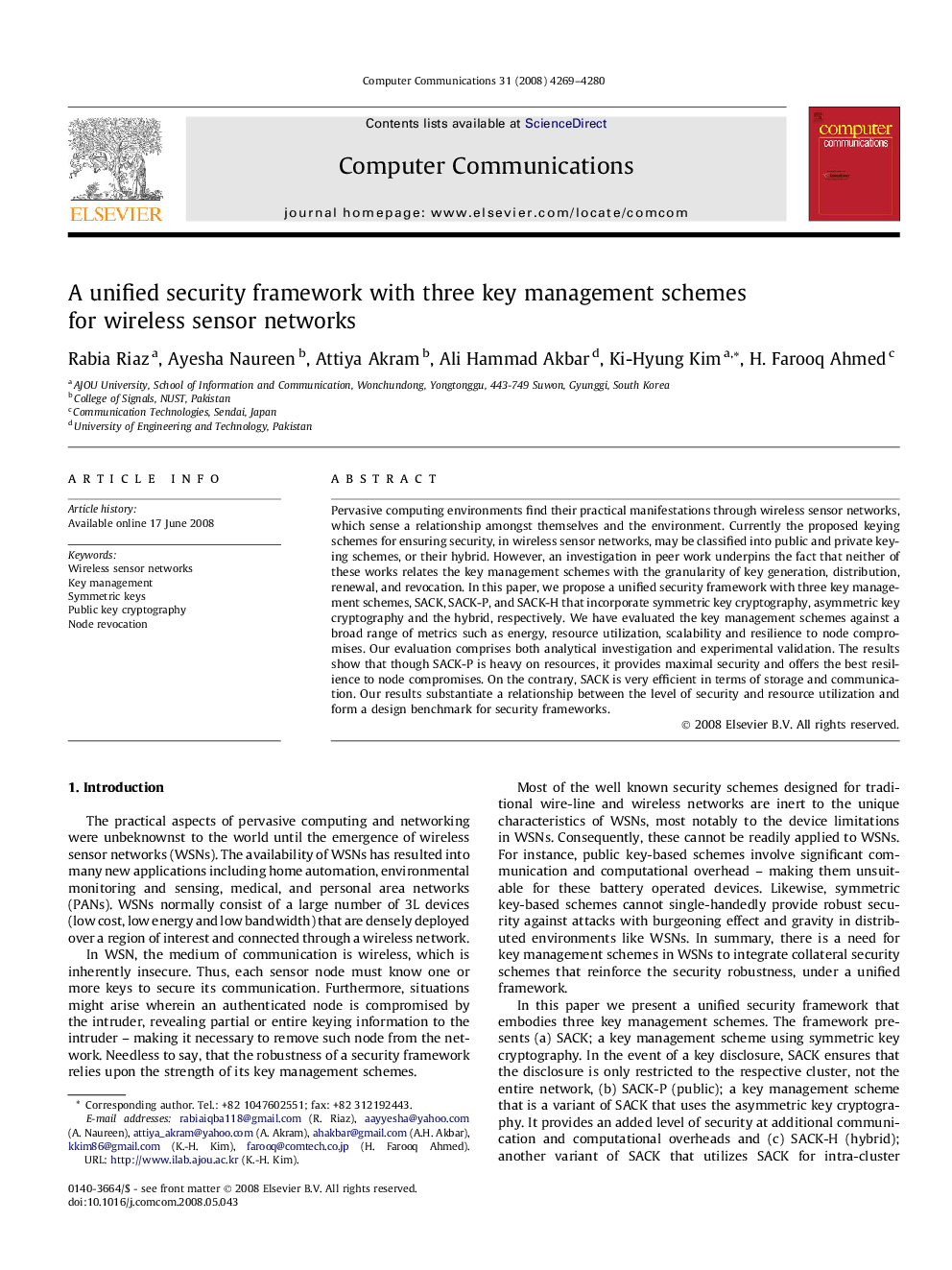| Article ID | Journal | Published Year | Pages | File Type |
|---|---|---|---|---|
| 449247 | Computer Communications | 2008 | 12 Pages |
Pervasive computing environments find their practical manifestations through wireless sensor networks, which sense a relationship amongst themselves and the environment. Currently the proposed keying schemes for ensuring security, in wireless sensor networks, may be classified into public and private keying schemes, or their hybrid. However, an investigation in peer work underpins the fact that neither of these works relates the key management schemes with the granularity of key generation, distribution, renewal, and revocation. In this paper, we propose a unified security framework with three key management schemes, SACK, SACK-P, and SACK-H that incorporate symmetric key cryptography, asymmetric key cryptography and the hybrid, respectively. We have evaluated the key management schemes against a broad range of metrics such as energy, resource utilization, scalability and resilience to node compromises. Our evaluation comprises both analytical investigation and experimental validation. The results show that though SACK-P is heavy on resources, it provides maximal security and offers the best resilience to node compromises. On the contrary, SACK is very efficient in terms of storage and communication. Our results substantiate a relationship between the level of security and resource utilization and form a design benchmark for security frameworks.
